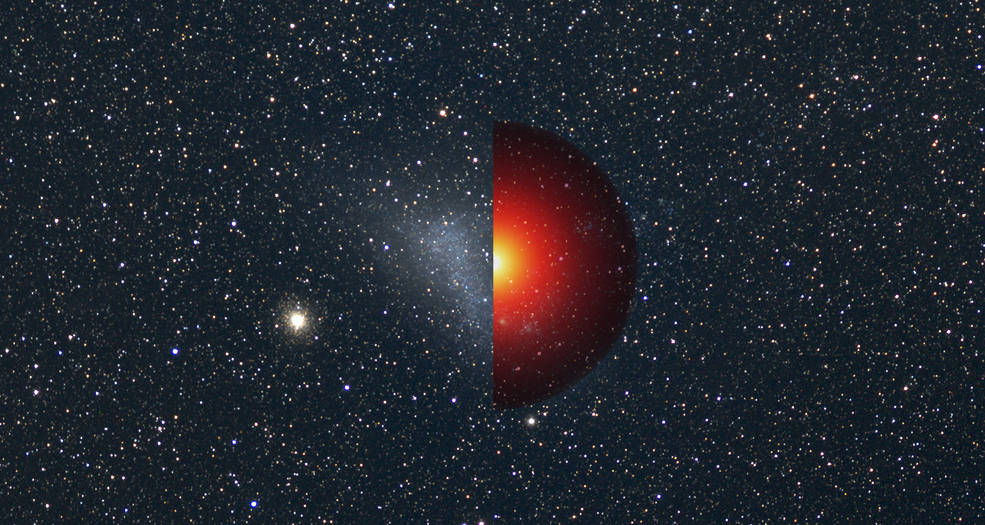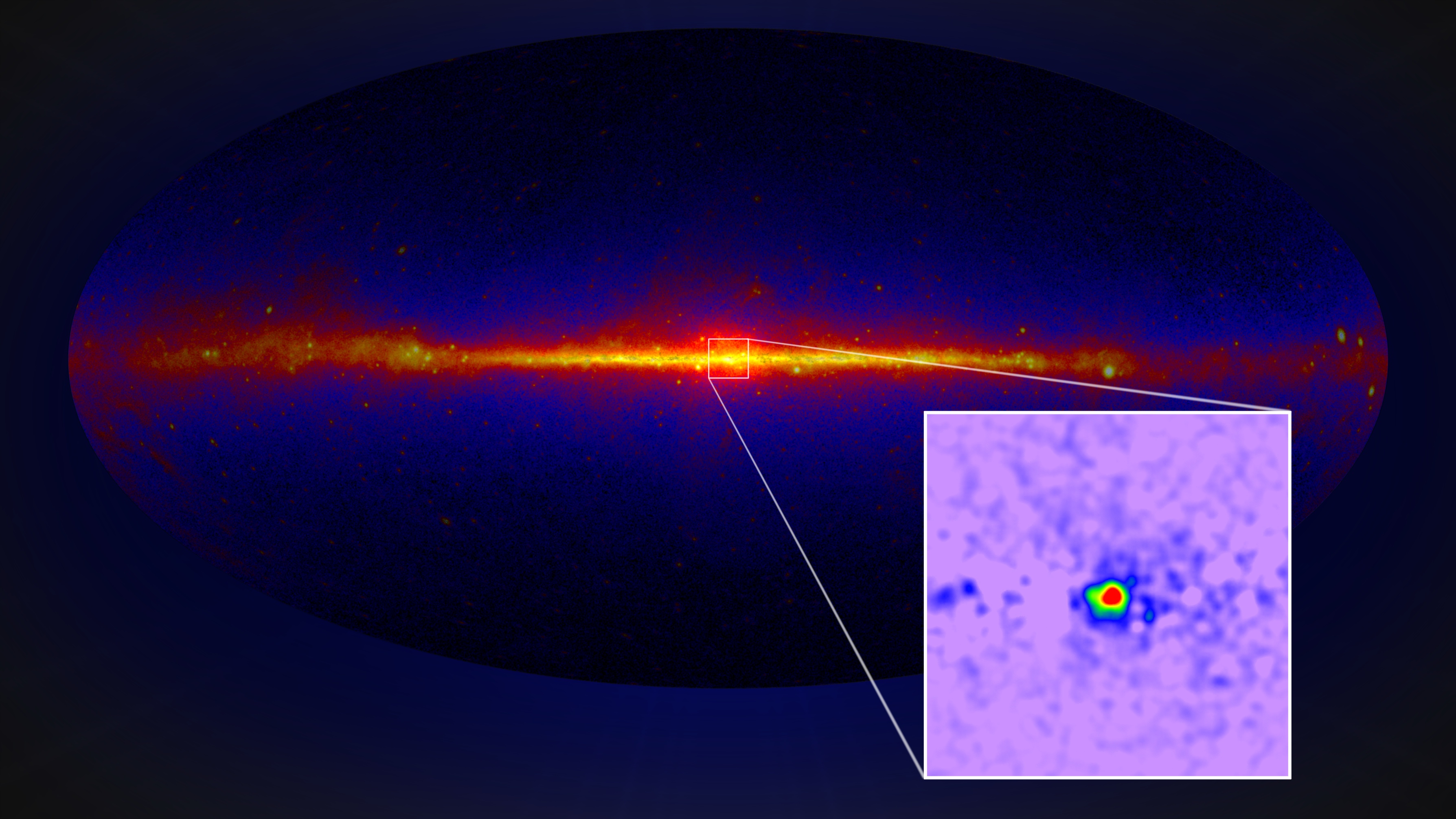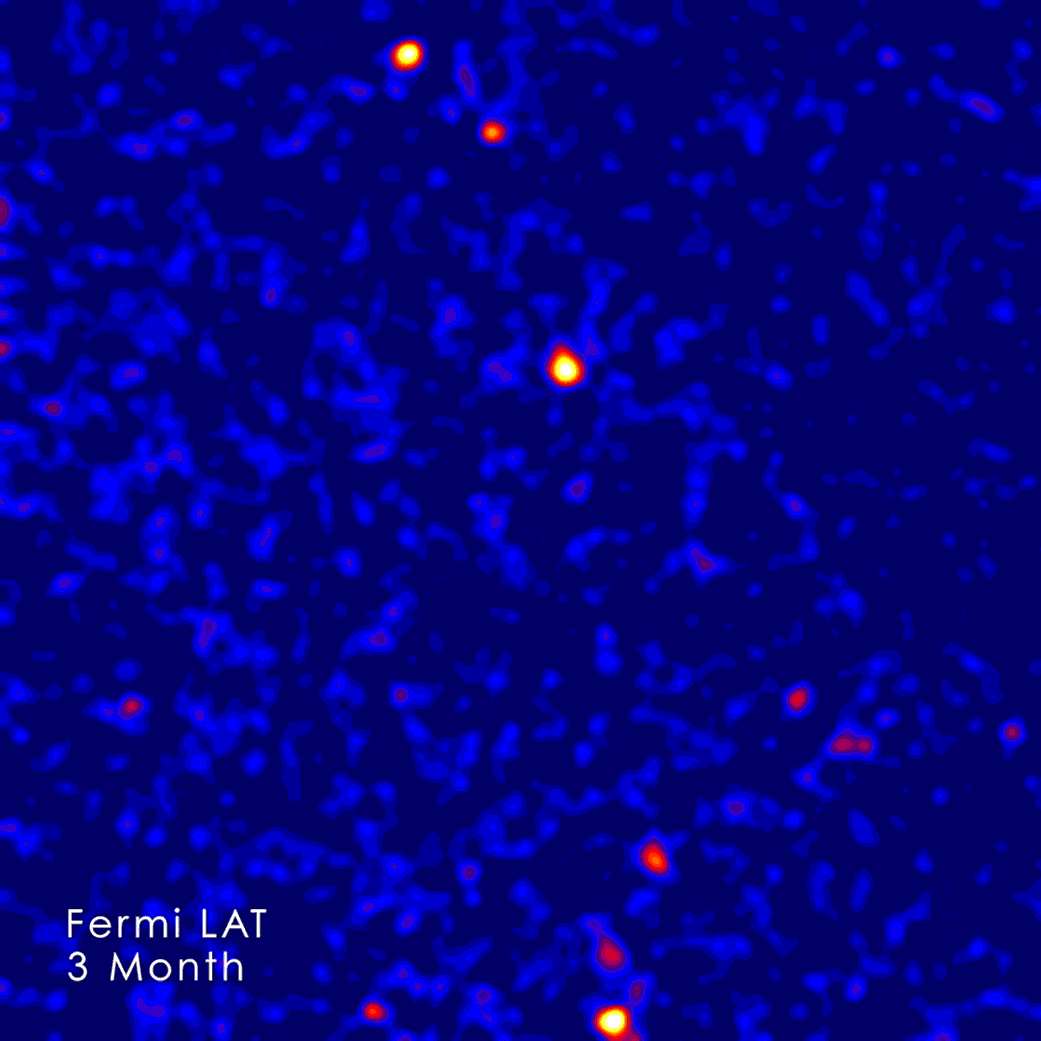Fermi Friday - December 14, 2018

Fermi Talks Tech: How to Search for Dark Matter with Very Few Photons
Posted by Mattia di Mauro (NASA/GSFC/CUA)
Evidences of the existence of dark matter have come from a variety of astrophysical objects from cluster of Galaxies to our own Milky Way Galaxy. This mysterious form of matter is called dark matter because it should interact very weakly with ordinary matter. It is not made of particles we know and it should be relatively stable over the history of the Universe. Dark matter constitutes the 85% of all the matter present in the Universe and it was in thermal equilibrium in the early Universe with all the other particles. The strength of interaction of dark matter particles is characterized with the annihilation cross section that should be close to the so-called thermal value in order to have the correct density nowadays.
A possible strategy to discover dark matter is through the detection of cosmic rays produced by the interactions of these elusive particles. Gamma rays are not affected by magnetic and electric fields so they point directly to the source they are emitted from. This makes the search for dark matter with cosmic gamma rays very promising.

Features in gmma-ray and cosmic-ray spectra.
Numerical simulations predict that dark matter should fill all galaxies with a spherically symmetric halo and many small substructures within each galaxy. The image above represents the predicted gamma-ray flux produced from dark matter particles as derived from one simulation.
Over the last 10 years of the Fermi mission, scientists have developed tools to search for dark matter in the directions of various potential dark matter locations.
Milky Way Dwarf spheroidal galaxies and other neighboring galaxies like the Small Magellanic Cloud are among the most promising targets because they have a high dark matter density and are faint in regular galaxy emission emission. Fermi scientists have performed several searches over the last 10 years searching for gamma-ray emission from tens of these nearby dwarf galaxies by stacking all the photons detected in the directions of them.

The Small Magellanic Cloud (SMC), at center, is the second-largest satellite galaxy orbiting our own. This image superimposes a photograph of the SMC with one half of a model of its dark matter (right of center). Lighter colors indicate greater density and show a strong concentration toward the galaxy's center. Ninety-five percent of the dark matter is contained within a circle tracing the outer edge of the model shown. In six years of data, Fermi finds no indication of gamma rays from the SMC's dark matter. Credits: Dark matter, R. Caputo et al. 2016; background, Axel Mellinger, Central Michigan University
Another promising target is the center of our Galaxy which is the predicted brightest direction for the gamma-ray emission from dark matter. However, the gamma-ray flux from the Galactic Center is dominated by the Galactic diffuse emission and unresolved sources like pulsars making the search of dark matter signatures extremely challenging.

A view of the entire gamma-ray sky from Fermi's LAT instrument, shaded to emphasize the central galaxy. The inset is a map of the galactic center with known sources removed, which reveals the gamma-ray excess (red, green and blue) found there. This excess emission is consistent with annihilations from some hypothesized forms of dark matter. Credit: NASA/DOE/Fermi LAT Collaboration and T. Linden (Univ. of Chicago)
An equally interesting region in the sky to look to at the directions where the Fermi-LAT does not detect any sources. Analyzing this portion of the sky, we have detected an irreducible residual of gamma rays that constitutes the Isotropic Diffuse gamma-ray emission. Most of this component should come from sources too faint to be detected, but perhaps some of it could be due to dark matter.
Other targets have been considered such as cluster of galaxies that are the most massive gravitationally collapsed objects in the Universe and thus they should contain the highest mass of dark matter.

This animation switches between two images of the gamma-ray sky as seen by Fermi's Large Area Telescope (LAT), one using the first three months of LAT data, the other showing a cumulative exposure of seven years. The blue color, representing the fewest gamma rays, includes the extragalactic gamma-ray background. Blazars make up most of the bright sources shown (colored red to white). With increasing exposure, Fermi reveals more of them. A new study shows blazars are almost completely responsible for the background glow. Credits: NASA/DOE/Fermi LAT Collaboration
All the searches performed so far have not clearly identified any signature of dark matter, but the limits are interesting and help to constrain the properties of dark matter.


